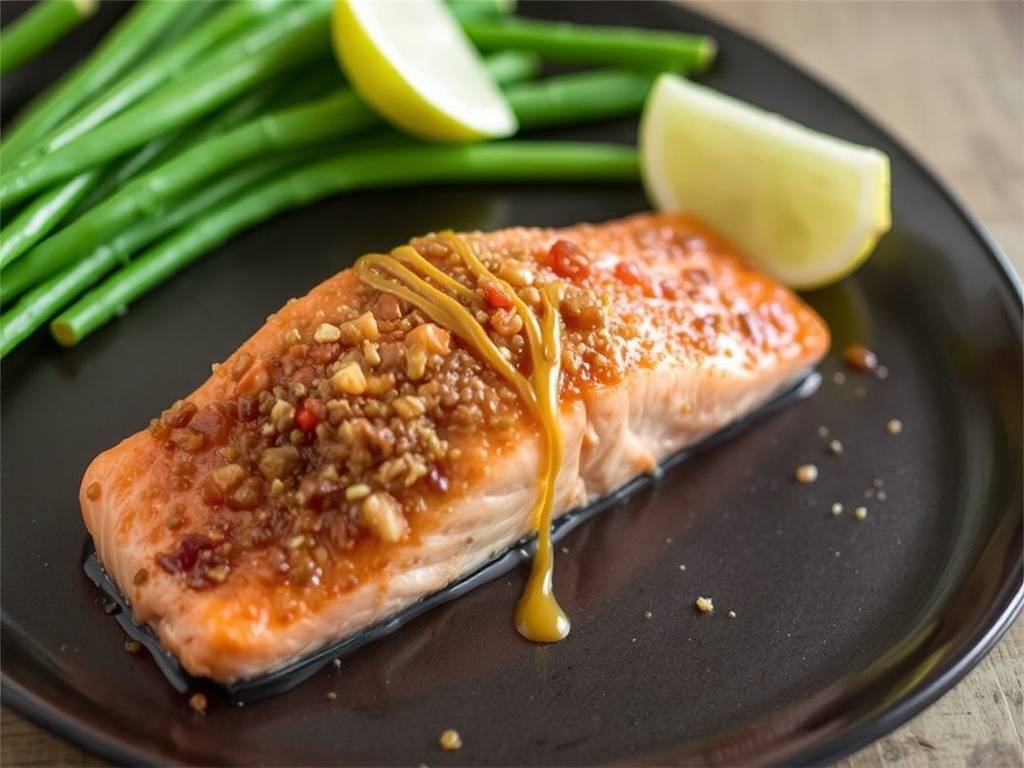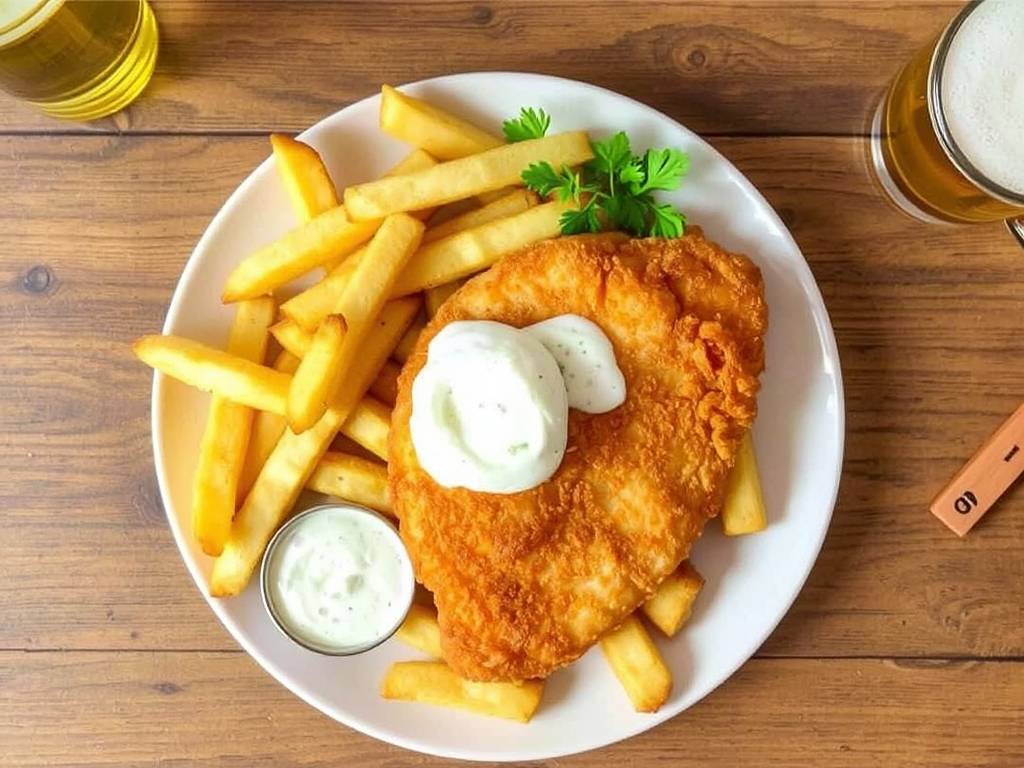The Ultimate Guide to Baking Brown Sugar Mustard Salmon: A Sweet and Savory Delight

There's something truly magical about the combination of sweet and savory flavors, especially when they come together on a beautiful fillet of salmon. If you're looking for a dinner recipe that is impressively delicious yet surprisingly simple to prepare, you've come to the right place. Baking salmon with a brown sugar and mustard glaze is a culinary game-changer. This method creates a perfectly flaky, moist fish with a caramelized, flavorful crust that will have everyone asking for seconds.
Why does this pairing work so well? The rich, oily nature of salmon stands up beautifully to strong flavors. The sharp, tangy punch of mustard cuts through the fish's richness, while the deep, molasses-like sweetness of brown sugar balances it out, creating a harmonious glaze that caramelizes beautifully in the oven. This isn't just another salmon recipe; it's your new go-to for a healthy, elegant, and foolproof meal.

Choosing Your Star Ingredient: The Salmon
Before we mix our glaze, let's talk about the main event: the salmon. The quality of your fish is paramount. You can use either a single, large side of salmon (often called a "side" or "fillet") or individual salmon portions. Both work wonderfully.
When selecting salmon, you have a few options:
- Atlantic Salmon: This is the most common variety found in supermarkets. It's reliably fatty, mild in flavor, and perfect for this recipe.
- Sockeye Salmon: Known for its vibrant red color and firmer texture, sockeye has a richer, more pronounced flavor.
- Coho or King Salmon: These are richer, fattier, and often considered a premium choice. They are exceptionally delicious but can be more expensive.
For the best baked salmon, look for fillets with bright, firm flesh that springs back when touched. There should be no strong "fishy" odor. If you see any pin bones, simply run your fingers along the fillet and use a pair of clean tweezers to pull them out. Don't forget to pat the salmon completely dry with paper towels before seasoning. This is a crucial step for achieving that perfect sear and glaze adhesion, rather than a steamed texture.
Crafting the Perfect Brown Sugar and Mustard Glaze
The glaze is where the magic happens. It's a simple mixture, but the choice of ingredients allows for customization to your personal taste.
The Core Components:
- Brown Sugar: This is the "sweet" in our sweet and savory duo. The molasses in brown sugar provides a deeper, more complex sweetness than white sugar, and it's key for that beautiful caramelization. For a richer flavor, opt for dark brown sugar. You can also experiment with coconut sugar for a less refined option.
- Mustard: This is the "savory" and "tangy" element. The type of mustard you use can dramatically alter the final dish.
- Dijon Mustard: My top recommendation. It's smooth, sharp, and complex without being overpowering. It creates a classic, elegant glaze.
- Whole Grain Mustard: If you prefer a more rustic texture with little pops of mustard seed, this is your best bet. It provides a fantastic flavor and visual appeal.
- Yellow Mustard: You can use it in a pinch, but note that it will result in a sharper, more vinegar-forward taste and a brighter yellow color.
The Simple Glaze Recipe:
- 1/4 cup brown sugar, packed
- 2 tablespoons Dijon mustard (or whole grain)
- 1 tablespoon olive oil
- 1 tablespoon soy sauce (or tamari for gluten-free)
- 1 clove garlic, minced
- Salt and black pepper to taste
Whisk all these ingredients together in a small bowl until you have a smooth, spreadable paste. The soy sauce adds an incredible layer of umami that enhances both the sweet and savory notes. For a little kick, a dash of smoked paprika or a pinch of cayenne pepper works wonders.
The Step-by-Step Baking Process for Perfectly Cooked Salmon
Now, let's bring it all together. This easy salmon baking method is designed for consistent, restaurant-quality results at home.
- Preheat and Prepare: Preheat your oven to 400°F (200°C). This high heat is essential for cooking the salmon quickly, keeping it moist, and caramelizing the glaze. Line a baking sheet with parchment paper or aluminum foil for effortless cleanup. Lightly grease the paper or foil with a bit of olive oil.
- Season the Salmon: Place your salmon fillets skin-side down (if they have skin) on the prepared baking sheet. Drizzle them lightly with olive oil and season with a pinch of salt and black pepper. Even if your glaze has salt (from the soy sauce), a light seasoning on the fish itself ensures every bite is flavorful.
- Apply the Glaze: Using a spoon or a pastry brush, generously coat the top and sides of the salmon fillets with your brown sugar mustard glaze. Be sure to cover every bit for maximum flavor. Don't be shy!
- Bake to Perfection: Place the baking sheet in the preheated oven. The cooking time will depend on the thickness of your fillets. A good rule of thumb is to bake for 12-15 minutes per inch of thickness. For a one-pound fillet that's about an inch thick, this usually takes 12-15 minutes. You'll know the salmon is done when it flakes easily with a fork and the internal temperature reaches 145°F (63°C) on an instant-read thermometer. The glaze should be bubbly and beautifully darkened around the edges.
- Rest and Serve: Once out of the oven, let the salmon rest for 2-3 minutes before serving. This allows the juices to redistribute throughout the fish, ensuring every single bite is moist and tender.
Serving Suggestions and Flawless Pairings
This versatile brown sugar mustard salmon pairs wonderfully with a wide array of sides. Here are some ideas to build a complete, memorable meal:
- For a Light Meal: Serve alongside a crisp green salad with a lemony vinaigrette or a refreshing cucumber salad. The acidity helps balance the richness of the fish.
- For a Hearty Meal: This salmon is fantastic with roasted vegetables. Asparagus, broccoli, Brussels sprouts, or sweet potatoes roasted on the same baking sheet (if there's space) make for an easy, flavorful side. The healthy baked salmon dinner is complete!
- For Grains: Fluffy quinoa, jasmine rice, or creamy mashed potatoes are excellent for soaking up the delicious glaze that pools on the plate.
Troubleshooting and Pro-Tips for the Best Results
Even with a simple recipe, a few expert tips can elevate your dish from good to extraordinary.
- Avoiding Overcooking: This is the number one mistake people make with fish. Salmon is best when it's still slightly translucent in the very center when you remove it from the oven. It will continue to cook as it rests (carryover cooking). An instant-read thermometer is your best friend here.
- Glaze Not Caramelizing? If your glaze isn't getting that lovely dark, bubbly look, your oven might not be hot enough. Ensure it's fully preheated. For an extra boost, you can switch the oven to a high broil for the last 1-2 minutes of cooking—watch it like a hawk to prevent burning!
- Make-Ahead Magic: You can whisk the glaze together up to 3 days in advance and store it in the refrigerator. This makes for an incredibly quick weeknight dinner—just pat your salmon dry, apply the glaze, and bake.
- Customize Your Flavor Profile: Feel free to get creative! Add a tablespoon of fresh lemon juice or zest to the glaze for brightness. A teaspoon of smoked paprika will add a subtle, smoky depth. A tablespoon of maple syrup can be used to replace a portion of the brown sugar for a different kind of sweetness.
Baking salmon with a brown sugar and mustard glaze is more than just a recipe; it's a reliable technique for creating a stunning, healthy, and deeply satisfying meal. The contrast of flavors and textures is simply unbeatable. So, the next time you're wondering what to make for dinner, remember this guide. Gather your ingredients, fire up your oven, and get ready to enjoy one of the most delicious and simple baked salmon recipes you'll ever try. Happy cooking





发表评论